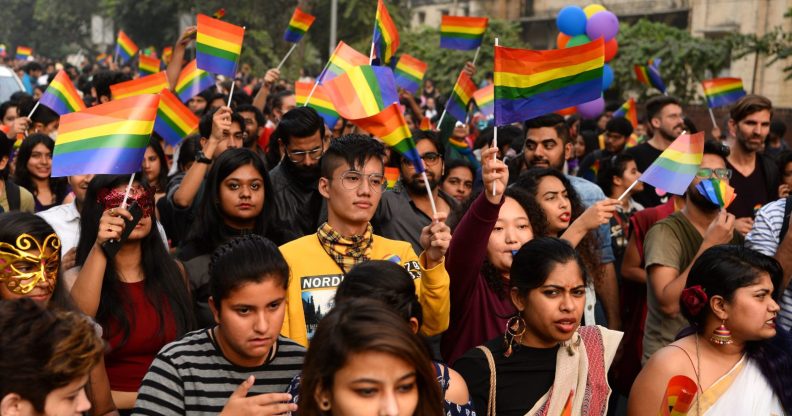What does QTIPOC stand for?

(Getty)
The terminology and definitions we use to describe different LGBT+ groups of people are constantly evolving to become more inclusive and representative.
Although this is obviously a positive thing, it’s not always immediately obvious what these terms mean.
And some academics including Eleanor Formby have even noted the complexity of the terms and professed: “I’m not sure that community is a very suitable word for such a diverse group of people.”
Nevertheless, the terms are incredibly important because they shed light on lesser represented factions of the LGBT+ community.
QTIPOC is an acronym that stands for Queer, Transgender and Intersex People of Colour. Here’s what this term means and why it’s important.
What is the significance of QTIPOC?
The initialism QTIPOC can be political and is commonly used in activist circles to highlight the varied experiences of queer and non-binary people of colour, the UK-based organisation GIRES (Gender Identity Research and Education Society) explains.
This is because, as the charity points out, queer, transgender, intersex and People of Colour “often experience intersecting oppressions on the basis of race, gender, sexual orientation and other factors.”
“These words carry significance as they were coined by People of Colour and QTIPOC communities – these words were created by us and for us,” the organisation states.
This isn’t to say everyone who identifies as a queer, transgender or intersex BAME (Black, Asian and minority ethnic) person uses the term, however.
Some people may question the growing number of different acronyms and terms, but the problem with only using the initialism “LGBT” is that it assorts numerous large and diverse groups into four, specific categories.
What is intersectionality?
The concept of intersectionality is central to understanding the importance of the term QTIPOC.
Intersectionality, first coined in the late 1980s by the academic and civil rights advocate Kimberlé Crenshaw, is the idea that we have many different identities – such as gender, race and faith – which are all interconnected.
It is often used to discuss the systematic oppression of different groups of people and how these oppressions link together – such as racism, sexism, homophobia, transphobia, ableism, classism and xenophobia.
Intersectionality is the concept that all these issues are connected and often occur in tandem with one another, something QTIPOC activist groups often highlight.
As Crenshaw explains: “Intersectionality is a lens through which you can see where power comes and collides, where it interlocks and intersects.
“It’s not simple that there’s a race problem here, a gender problem here, and a class or LGBTQ problem there. Many times that framework erases what happens to people who are subject to all of these things.”
In 2013, the comedian Wanda Sykes previously described her experience as a “trifecta of discrimination” on Oprah’s Next Chapter.
“If you’re being discriminated against, how do you know if it’s because you’re a woman, because you’re black of because you’re gay?” Oprah asked.
“There’s the problem. What are you upset about? Which thing?” Sykes replied. “So yeah, it’s confusing.”
Discrimination
Activists and human rights groups frequently highlight the violence faced by queer and non-binary people of colour, which stems from a combination of anti-LGBTQ prejudice, racism and a lack of legal protections.
According to the Human Rights Campaign, 24 of the 28 known transgender people killed due to fatal violence in the United States in 2017 were people of colour.
Twenty-two were trans women of colour. This does not include transgender people whose deaths were not reported due to misgendering in police reports or the news.
Discrimination also prevents many people from being able to access the right healthcare and support.
A United Nations report highlights anti-discrimination laws often fail to protect people who are intersex, a term used to describe someone “who may have the biological attributes of both sexes” or “whose biological attributes do not fit with societal assumptions about what constitutes as male or female.”
Without adequate protection, intersex people may be subjected to discrimination in healthcare, education, public services, employment and in sport, due to the practice of gender testing.
In 2014, Indian athlete Dutee Chand was disqualified from the Commonwealth Games after hormone testing revealed elevated levels of testosterone in her body which were above the range considered “normal” for female competitors.
Chand has hyperandrogenism, a condition in which an excessive amount of testosterone is produced.
How did this story make you feel?

